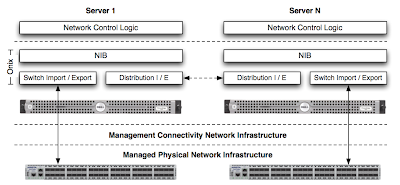Case for RAMClouds: Scalable High-Performance Storage Entirely in DRAM

I wrote about Ousterhout's "The Role of Distributed State" work before. This review is for his recent work on RAMClouds, which appeared in SIGOPS Operating Systems Review . This paper makes a case for keeping all the data in the RAM over distributed nodes in a datacenter. "A RAMCloud is not a cache like memcached and data is not stored on an I/O device, as with flash memory: DRAM is the permanent home for data." Obviously, storing everything in RAM would yield a very high-throughput (the paper mentions 100-1000x) and very low-latency (again the paper mentions 100-1000x) system compared to disk-based systems. However, the primary reason the authors are excited about RAMCloud is the following: "RAMCloud will simplify the development of large-scale Web applications by eliminating many of the scalability issues that sap developer productivity today." The motivation for RAMCloud is to provide a general-purpose storage system that scales far beyond existing...






